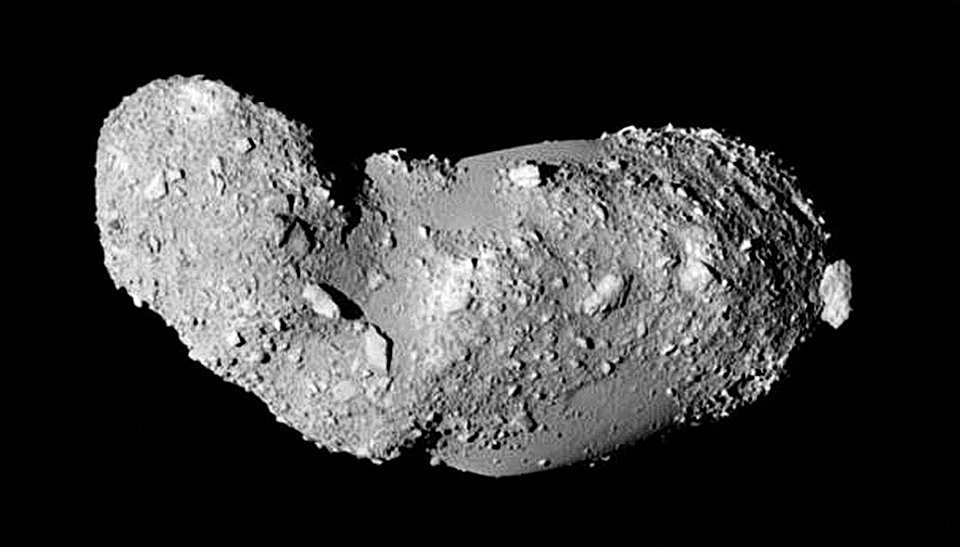Asteroid Itokawa gives up its secrets
Paul Scott Anderson in SPACE | September 8, 2018
Itokawa is the 1st asteroid from which samples were obtained and returned to Earth. From these samples, scientists have figured out Itokawa’s true age and geologic history.
 Itokawa, as seen by the Japanese spacecraft Hayabusa in 2005. The asteroid is basically a “rubble pile” of material held together by gravity. Image via JAXA/ISAS.
Itokawa, as seen by the Japanese spacecraft Hayabusa in 2005. The asteroid is basically a “rubble pile” of material held together by gravity. Image via JAXA/ISAS. |
The asteroid – basically a “rubble pile” held together by gravity – is 4.6 billion years old, about the same age as the solar system itself. But it didn’t always look the way it does now; the scientists determined that the “original” Itokawa had collided with another asteroid around 1.5 billion years ago, and was almost destroyed. The resulting debris, however, re-assembled back into the “rubble pile” we see today. Also, it seems that Itokawa inhabited the main asteroid belt up until only the past couple hundred thousand years or so. It now resides in a different orbit as a Near Earth Asteroid (NEA) or Earth-crossing asteroid, which may result in a collision with Earth within the next million years or so, according to scientists. That possibility is based on a previous study which simulated 39 nearly identical orbits of the asteroid. It’s also possible that Itokawa will break apart within that time.













 Reply With Quote
Reply With Quote